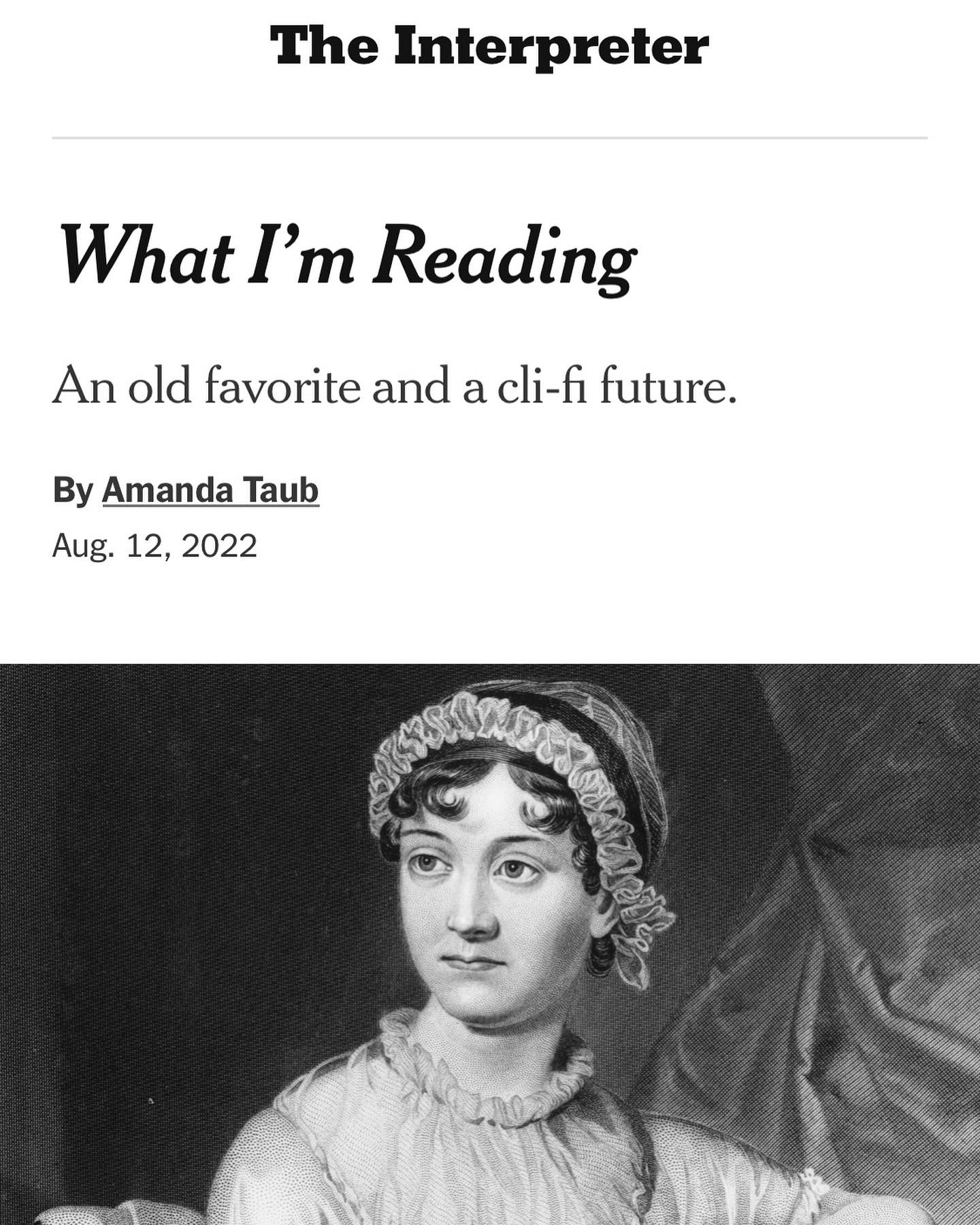Jane Austen and the Pursuit of Status
Amanda Taub and Max Fisher write a column for the NYT called “The Interpreter,” which gives context and analysis allowing the reader to — ta da! — interpret current events. Occasionally, Taub does a dispatch called “What I’m Reading” and gives people some tips on (nonficition) books that provide more in-depth knowledge to stories that she’s reporting. For instance, in early August her “What I’m Reading” version of the column had the subhed “The seismic shifts of the 1960s are still reverberating in the Democratic Party”; in the body of the column, she gave some examples of books that helped illuminate this theme. (If you’re interested, they included The Warmth of Other Suns: The Epic Story of America’s Great Migration, by Isabel Wilkerson and Racial Realignment: The Transformation of American Liberalism, 1932-1965, by Eric Schickler.)
In mid-August, Taub did something kind of awesome: She wrote a “What I’m Reading” column about Jane Austen.
Here’s how it opened: “’I’m curious, do you ever read fiction?’ an editor asked me this week. And I do! I tend to write about nonfiction in this space, in part because I’m often writing about work that contributes to or shapes my reporting. But fiction can do that too.” [Amy nods her head.]
We all probably know that Austen’s work is very concerned with class status — and more to the point, “the pursuit of status,” as Taub writes. She then explains how this “pursuit” really is a high-view throughline in so many news stories, “from Putin’s Russia to social media in rural Sri Lanka.” Taub then gives quick summaries of Mansfield Park and Pride and Prejudice — which, coincidentally, are the two Austen novels I could find quickly on our shelves.
Amanda Taub, helping to prove my point that #FictionIsRelevant.
originally published on instagram

